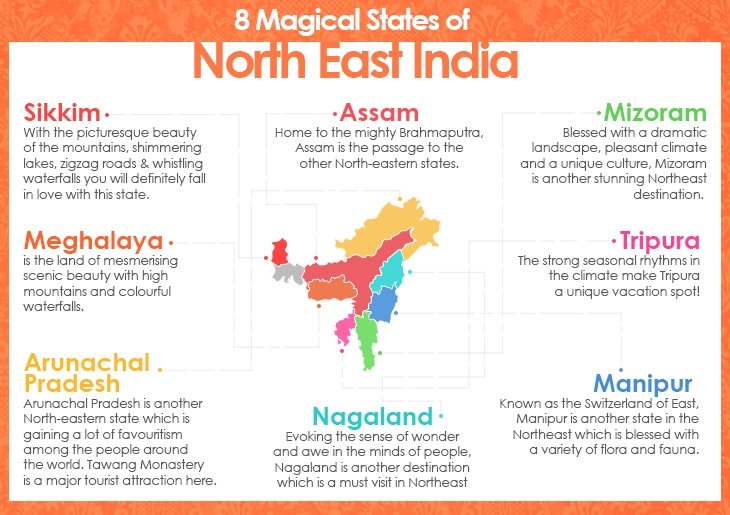
Regional Aspirations | Class 12 Political Science
The chapter familiarizes students with the diverse political ambitions across the Indian Subcontinent’s regions. It delves into the concepts of nation-building and the pursuit of regional autonomy. Additionally, it sheds light on significant accords such as those in Punjab and the North-East.
________________________________________________________________________________________________
Nation Building
Nation Building is an ongoing endeavor, not a task that can be completed definitively. With each iteration, fresh challenges emerge alongside lingering unresolved issues. As the democratic experiment unfolds, individuals from diverse regions increasingly voice their aspirations for autonomy.
What were the characteristics of the movements?
What was unique about the Indian approach?

Tension Points
- Some Dravid groups in the south also sought their own homeland. Following these events, mass movement for the construction of linguistic states erupted in many regions of the world.
- The states of Andhra Pradesh, Karnataka, Maharashtra, and Gujarat were among those affected by the riots. There were protests in the south, particularly in Tamil Nadu, opposing declaring Hindi the country’s official language.
- In the North, there were strong pro-Hindi demonstrations demanding that Hindi be made the official language soon.
- During the 1950s, people who spoke Punjabi began to demand a separate state for themselves. In 1966, the states of Punjab and Haryana were formed as a result of this agreement.
- It was decided to form the states of Chhattisgarh, Jharkhand, and Uttaranchal (now Uttarakhand).
- The country’s internal boundaries were redrawn. The problem in other areas, such as Kashmir and Nagaland, was so complicated that it could not be solved during the first phase of nation-building.

Jammu & Kashmir
 The Sources of the Issue
The Sources of the Issue
What is the Instrument of Accession?
Internal and External Conflicts
What changed in terms of political dimensions after 1948?
After the Insurgency
A Call for Regional Self-Government
Punjab
Political Context
- Firstly, their government was dismissed by the Centre mid-way through its term.
-
Secondly, they did not enjoy strong support among the Hindus.
-
Thirdly, the Sikh community, like all other religious communities, was internally differentiated on caste and class lines.
Cycle of violence
Assasination Of Indira Gandhi
 On October 31, 1984, Prime Minister Indira Gandhi was assassinated by her bodyguards outside her residence. This tragic event sent shockwaves across the nation, prompting outbreaks of violence against the Sikh community in Delhi and various parts of northern India.
On October 31, 1984, Prime Minister Indira Gandhi was assassinated by her bodyguards outside her residence. This tragic event sent shockwaves across the nation, prompting outbreaks of violence against the Sikh community in Delhi and various parts of northern India.The Longowal Accord
Operation Blue Star
The North-East
What were the Autonomy demands of the North-Eastern states?
Secessionists Movements
 Autonomy demands were easier to respond to because they included utilising various parts of the Constitution to accommodate diversity.It was far more difficult when some factions wanted a separate country on a consistent basis, rather than out of a fit of rage.For a long period, the country’s leadership had to deal with this issue in at least two North-East states.The Mizo Hills have constituted an autonomous region within Assam after independence. Some Mizos claimed they were never a part of British India and hence did not qualify for membership in the Indian union.After the Assam government failed to appropriately respond to the great famine in the Mizo Hills in 1959, the independence movement garnered public support.
Autonomy demands were easier to respond to because they included utilising various parts of the Constitution to accommodate diversity.It was far more difficult when some factions wanted a separate country on a consistent basis, rather than out of a fit of rage.For a long period, the country’s leadership had to deal with this issue in at least two North-East states.The Mizo Hills have constituted an autonomous region within Assam after independence. Some Mizos claimed they were never a part of British India and hence did not qualify for membership in the Indian union.After the Assam government failed to appropriately respond to the great famine in the Mizo Hills in 1959, the independence movement garnered public support.
The Mizo National Front


Movement Against Outsiders
The Accord of 1958
What are the lessons to be learned from these examples?
- Regional demands must be addressed on a regular basis in a large and diverse democracy like India. The process of nation-building is never-ending.
- The second lesson is that dialogue, not repression, is the appropriate response to regional ambitions.
- The third lesson discusses the importance of power-sharing. It is insufficient to have a formal democratic organisation.
- It is insufficient to assert that governments and regions have autonomy in their own domains. The nation is divided into regions.
- As a result, regions must have a say in the destiny of the country. If areas are excluded from national decision-making, they may acquire a sense of injustice and alienation.
- The fourth lesson is that regional economic differences contribute to a perception of regional prejudice.


